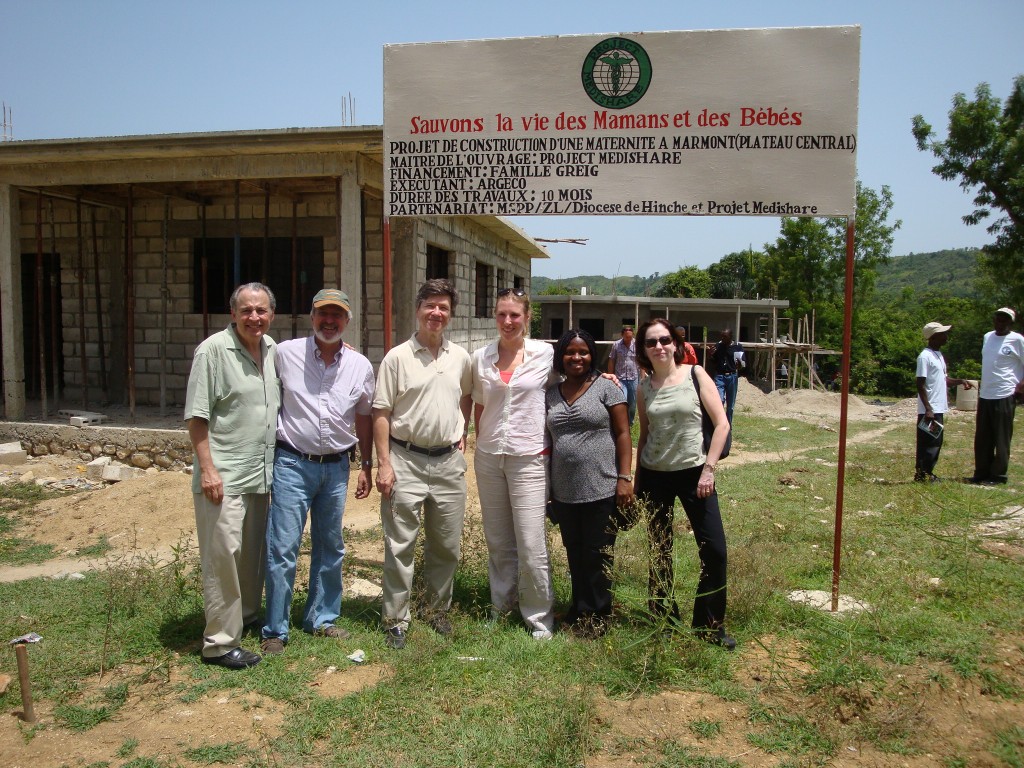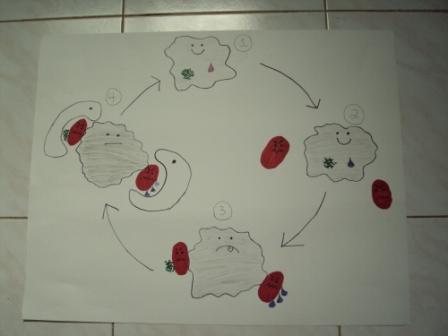The End of a Beginning
Even though I’ve been back in the states for almost a week now, the events of last week are just too exciting not to blog about.
When BTB project coordinator Janet arrived in Thomonde last Wednesday to check up on our internship projects and transport us back to the U.S., Kelly and I were astonished to find out that Jeffrey Sachs, Sonia Sachs, and an entire UN delegation were planning to visit Project Medishare the next day!
I don’t think I’ve mentioned this in my previous blogs, but one of the villages where Project Medishare’s team works, Marmont, has been selected by the Earth Institute as a Millennium Village. It is the first Millennium Village in the Western Hemisphere. The goal of the Millennium Village Project is to improve the health, agriculture, economy, etc. in one impoverished village at a time in a developing country. The villages are designed to demonstrate how the Millennium Development Goals can be achieved through community-based development.
Early Thursday morning, about 30 conference attendees arrived at Project Medishare’s compound and we began a tour of Marmont’s various development projects.
Our first stop was at the construction site for the Akamil Production Facility and the Childhood Nutrition Treatment Center. Akamil is an oatmeal-like substance (we actually tried it at lunch—it’s good!) fortified with vitamins and minerals, which will be produced locally in order to decrease the prevalence of malnutrition in the area.
Next, we drove up Mourne Sourit to take in a view of Marmont. We could see Thomonde, Hinche, and the surrounding area.
We then met a group of farmers under a tall tree at the bottom of the hill, where we witnessed a dialogue between Jeffrey Sachs and local Haitian farmers. He asked the farmers what kind of crops they grew, where they obtained water, if they had enough water, what they thought the government and other non-governmental organizations could provide for them, etc. He also specifically asked the women, “Do you have enough food?”, and the women in the crowd quickly and in unison answered, “No.”

It was an incredible opportunity to observe this conversation between Jeffrey Sachs and the farmers. It’s one thing to hear such an important figure in international development speak, but to be able to listen in on a conversation between Jeffrey Sachs and everyday Haitian farmers, and really see Jeffrey Sachs in his element, is truly a one-in-a-lifetime opportunity.
The delegation then took a quick tour of the clinic in Marmont and the Maternity Ward construction site, which is expected to be completed in December. A dormitory-like building is also under construction directly behind the ward, which will house physicians and staff so that they can provide 24-hour care for women.

(Dr. Green, Dr. Fournier, Professor Jeffrey Sachs, Dr. Greig, Dr. Malou, and Dr. Sonia Sachs in front of the Maternity Ward site)
When we arrived back at Project Medishare headquarters, Kelly and I had hoped to demonstrate at least one of the backpacks to any of the conference attendees, but we knew that they were on a very tight schedule and understood that we might not get the opportunity due to time restraints. Dr. Arthur Fournier, co-founder of Project Medishare, was able to gather a few people to view the Diagnostic Lab-in-a-Backpack, however, and Kelly and I were thrilled to give a quick demo of the backpack. Dr. Fournier and Dr. Sonia Sachs were very impressed with the backpack and were able to provide us with valuable feedback as well.

(Dr. Fournier, the representative for the Haitian Prime Minister, and Dr. Sonia Sachs examining the user manual of the Diagnostic Lab-in-a-Backpack)
As quickly as they came, the delegation departed for Port-au-Prince, and it was hard to believe that all of the day’s events had actually happened. From schoolchildren, to medical students, to Jeffrey and Sonia Sachs, Kelly and I have certainly met a wide range of interesting and inspiring people in Haiti!
Since this is my last blog, I want to thank Beyond Traditional Borders, Bethlehem Ministries and the staff and students at St. Barthelemy, Project Medishare, Janet Wheeler, Kelly, and all of the incredible people I’ve worked with at Rice and in Haiti for providing me with this amazing opportunity.
A quick story on how the past year’s events have come full circle for me: just last summer, I happened to read a book about a doctor in Haiti, Mountains Beyond Mountains. I came across the name of a hospital that sounded familiar, and after talking to my mom, I realized that it was the same hospital she had worked at over ten years ago. Thus began my initial interest in global health. Soon after, I also happened to read The End of Poverty, by Jeffrey Sachs, which further spurred my interest. In the fall, I eagerly signed up for a Bioengineering and World Health course and took a subsequent course in the spring. Only one year later, I find myself living and working in the settings of these books, meeting the people I’ve read about and experiencing the country I’ve heard about for years, and even meeting one of the authors. I wouldn’t be exaggerating to say that this experience has been a dream come true.
In many ways, this internship has felt like the culmination of months of preparation and work, and it has been, but I also know that this is just the end of a beginning. As a rising senior who’s still unsure about life after graduation, I went into this internship expecting to figure out which post-grad road to take, but I’m surprisingly as uncertain as ever. I’ve experienced the hope in teaching children who otherwise would not receive an education, witnessed the joy in providing sight to the blind, felt the excitement in building devices that improve the health of those most in need, and enjoyed the adventure of traveling and experiencing a new culture. A year ago, I never would have expected to be where I am now, so I’m not too worried about the future—I know it will work out even better than I can imagine.
Thanks for reading! I hope you enjoyed reading about my adventures in Haiti as much as I enjoyed writing about them.


















